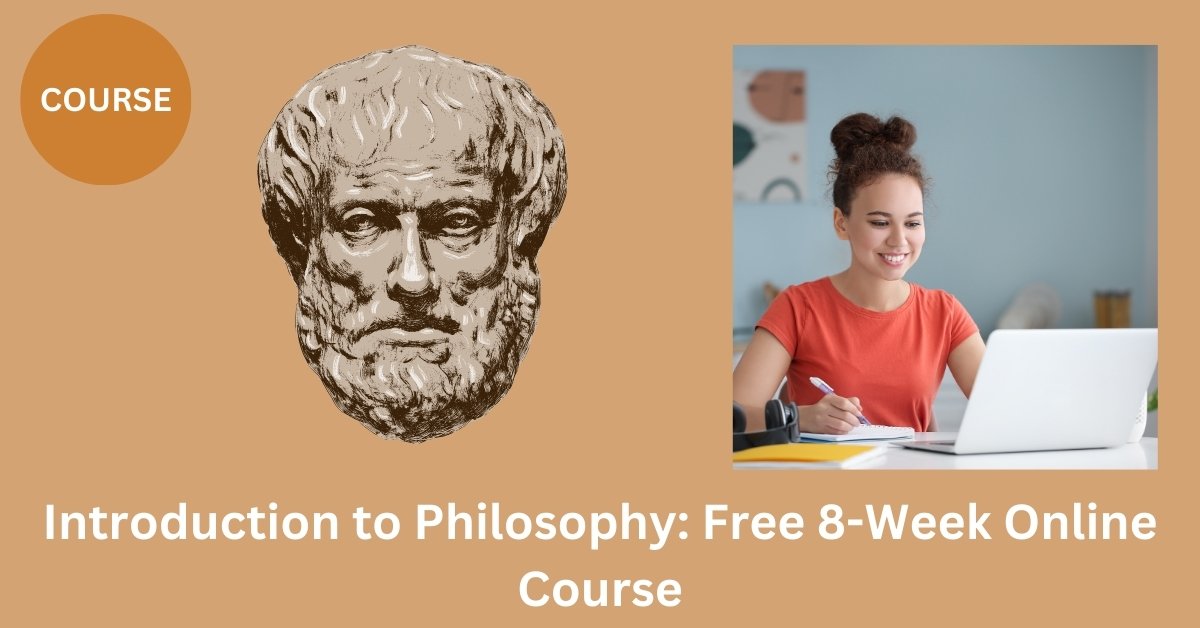Philosophy often serves as a guiding tool for those seeking to lead a more meaningful life; however, the abundance of information available can sometimes be overwhelming. To truly benefit from philosophy, it is essential to focus on its foundational ideas, such as Plato’s teachings and the concept of the chariot allegory. By gaining a clear understanding of this influential idea, individuals can better apply philosophical principles to their lives. This article explores Plato’s philosophy, examines the chariot allegory, and discusses how these ideas contribute to the pursuit of a more meaningful and fulfilling existence.
Key features of Plato’s philosophy
Plato, a renowned ancient Greek philosopher, laid the foundation for much of Western thought and philosophy. One of his key ideas was the concept of the “Forms” or “Ideas.” According to Plato, the physical world that we see is just a shadow of a higher, unchanging reality made up of perfect, abstract Forms. For example, a tree in the physical world is an imperfect version of the perfect “tree” that exists in the world of Forms.
Plato also believed in the importance of reason and the pursuit of truth. He argued that humans could use their rational minds to access the deeper truths of existence. This is particularly evident in his famous work, The Republic, where he outlines his vision of an ideal society. Here, he introduces the idea of a “philosopher-king” — a wise and just ruler who governs based on reason and knowledge rather than personal power or wealth.
Another central part of Plato’s philosophy is his emphasis on education. He believed that knowledge and learning were critical for achieving a virtuous life. His famous metaphor of the “Allegory of the Cave” illustrates how education can lead people from ignorance (the shadows in the cave) to enlightenment (the world outside the cave).
Overall, Plato’s philosophy focuses on understanding higher truths, valuing reason, and striving toward justice and wisdom in both individual and societal contexts.
What is the chariot allegory?
Plato’s chariot allegory is a way to explain the nature of the human soul and how it works. According to Plato, the soul is divided into three parts. The first part is reason, which represents wisdom and guidance. It helps us make thoughtful decisions and understand what is right. The second part is spirit, which is connected to emotions like courage, ambition, and willpower. This part drives us to take action and stand up for what we believe in. The third part is desire, which is linked to our wants and needs, including physical pleasures and material things.
Plato describes these parts as working together, but not always in harmony. The soul’s ultimate goal is to achieve balance, with reason guiding the other parts to live a virtuous and meaningful life. For Plato, reason must lead, because it helps keep spirit and desire in check. If desire becomes too strong, it can disrupt this balance, leading to poor choices. Similarly, if spirit is not aligned with reason, our emotions can cloud our judgment.
The chariot allegory reveals how complex the human experience is, as each part of the soul pulls in different directions. Plato believed that understanding this internal struggle is key to self-mastery and living a good life. By aligning all parts under the guidance of reason, people can strive toward personal growth and enlightenment.
This concept can be better understood through the following example. Imagine a chariot being pulled by two horses, as illustrated in one of Plato’s famous allegories. One horse represents our noble desires, striving for truth, honor, and selflessness, while the other symbolizes our baser instincts, seeking pleasure, material wealth, and instant gratification. The charioteer, acting as a guiding force, must carefully manage and balance the opposing forces of the horses to steer the chariot forward on the right path. Without balance and control, the chariot risks veering off-course or crashing. This imagery effectively captures the constant tension and struggle within individuals as they try to navigate life, making choices and managing their desires. Through this example, the delicate balance between reason, higher aspirations, and basic impulses is vividly depicted, offering a timeless metaphor for the challenges of achieving harmony within oneself.
Challenges to Plato’s view about the chariot allegory
Some philosophers object to or reject Plato’s ideas because they believe the chariot allegory oversimplifies the complexity of human nature and decision-making. One common criticism is that the allegory divides the soul into rigid, separate parts—reason, spirit, and appetite—which may not accurately reflect how people think and feel. Critics argue that human beings do not always behave in such a neatly divided way and that emotions, desires, and reasoning are often deeply interconnected, making the allegory too simplistic for understanding real human experiences.
Additionally, some philosophers question the emphasis on reason as the highest and most important part of the soul. Plato’s allegory suggests that reason should dominate and control the other parts of the soul, like the charioteer controlling the horses. However, critics point out that this view may undervalue the role of emotions and desires in a balanced, meaningful life. Instead, they argue that emotions and desires are not just forces to be controlled but can offer valuable insights and motivations that enrich human experience.
Another objection comes from those who see the allegory as overly idealistic. Plato’s model assumes that humans can achieve harmony by perfectly aligning reason, spirit, and appetite, but many thinkers find this unrealistic. They argue that conflict and contradiction are natural parts of being human, and rather than seeking perfect control or balance, people should accept and learn to live with these tensions.
Finally, some philosophers reject Plato’s perspective because they see it as promoting a hierarchical and elitist view of human nature. By placing reason above everything else, Plato seems to suggest that those who are more “rational” are inherently superior, which can lead to problematic ideas about who is most qualified to lead or determine what is right. Critics prefer more egalitarian approaches that recognize the value of different aspects of human nature without ranking them.
Why the chariot allegory is important to Plato’s philosophy
These are some of the central reasons why grasping the concept of the chariot allegory is essential for comprehending Plato’s philosophy.
- Understanding the Soul’s Structure
The chariot allegory is critical to understanding Plato’s view of the soul because it presents a clear metaphor for its complex structure. The allegory uses the imagery of a charioteer guiding two horses to represent different parts of the soul. This helps illustrate that the soul is not a single, unified force but rather a dynamic combination of competing elements that must be balanced. By presenting the soul in this way, Plato offers a framework for thinking about human nature and the internal struggles people face. This idea helps simplify a difficult concept, making it easier to think about how desires, rationality, and emotions influence actions and decisions.
- Introducing the Idea of Moral Harmony
The allegory emphasizes the importance of balance and harmony, key themes in Plato’s works. Each part of the chariot metaphor corresponds to a different role in achieving this harmony, showing that human life is a cooperative effort between various aspects of our being. By focusing on this balance, the allegory demonstrates how an individual can achieve a kind of inner peace through self-discipline and alignment. This idea is useful in understanding how Plato connects morality and personal well-being, stressing that the good life depends on the ability to govern oneself wisely.
- Connecting the Individual and Society
The chariot allegory also offers insight into how Plato links the structure of the soul to the broader structure of society. The struggle to control the opposing parts of the soul mirrors the effort to create order within a community. This parallel helps explain why personal virtues like wisdom and self-discipline are so closely tied to societal functions in Plato’s philosophy. By understanding the allegory, readers can see how these personal struggles reflect larger concerns about justice, leadership, and communal harmony. This connection makes the allegory essential for relating Plato’s ideas about individuals to his vision of an ideal society.
Contrasting Plato’s philosophy with Nietzsche’s philosophy
Plato’s allegory of the chariot and Nietzsche’s philosophy differ in their core views about human nature and the pursuit of truth. Plato’s concept compares the soul to a chariot pulled by two horses, symbolizing the tension between reason, desire, and spirit. His philosophy emphasizes harmony and control, where the rational part of the soul directs the other aspects toward a higher, universal truth. This perspective assumes a structured, ideal realm of truth that humans should aspire to discover and align with.
Nietzsche, on the other hand, dismisses the idea of universal truths and focuses on individualism and subjective experience. He critiques structured ideals like those presented by Plato, arguing that such notions suppress personal freedom and creativity. Nietzsche emphasizes the “will to power,” the idea that humans define their own meaning and values through struggle and self-expression. Rather than striving for harmony and a universal ideal, Nietzsche celebrates chaos, conflict, and the creation of individual meaning.
While Plato views reason as the guiding force toward overarching truths, Nietzsche rejects this notion, believing truth itself is fluid and subjective. These contrasting views highlight a key difference in their philosophies—Plato values order and universals, while Nietzsche champions individuality and the rejection of absolute truths. This divergence reflects their broader beliefs about life, knowledge, and the human experience.
The Chariot Allegory, Plato’s philosophy and the philosophy of life
Reflecting on Plato’s views, particularly the chariot allegory, plays a vital role in developing your own philosophy of life, regardless of whether or not you agree with his perspective. At its core, this type of reflection invites you to think deeply about the forces that drive your decisions, the internal conflicts you face, and the values that guide your actions. Life is often a balancing act, filled with competing desires, responsibilities, and personal goals. Considering ideas like Plato’s forces you to zoom out and contemplate how these parts of yourself interact, which can ultimately lead to greater self-awareness.
One of the most practical benefits of this reflection lies in gaining a clearer understanding of your own purpose. Plato’s allegory, like much of his philosophy, encourages you to question your direction in life and the motivations behind it. Are you being driven by external influences, emotions, or impulses? Or are your choices aligned with what you recognize as meaningful and fulfilling? While you don’t have to agree with Plato’s conclusions, asking these questions is a way to challenge assumptions and refine the principles you live by.
Additionally, considering philosophical perspectives like Plato’s helps you confront moments of internal struggle. Everyone experiences situations where emotions and logic pull them in different directions, or where conflicting priorities create tension. Reflecting on such ideas equips you with a mental framework to manage these moments more effectively. It encourages you to pause, evaluate, and make choices that reflect your higher values rather than fleeting desires.
Finally, engaging with philosophical concepts like Plato’s is an exercise in critical thinking and open-mindedness. It’s not just about whether you agree or disagree but about exposing yourself to new perspectives and learning from them. Life is complex, and developing a personal philosophy involves synthesizing a range of ideas and experiences. By reflecting on a thinker like Plato, you expand your capacity to make thoughtful, intentional decisions as you grow and adapt.
Ultimately, reflecting on Plato’s chariot allegory—or any philosophical concept—reminds you that living a good and meaningful life requires intention and effort. It challenges you to think critically about who you are and strive for balance in ways that align with your unique values. Whether you agree with Plato or not, his ideas can inspire you to approach life with curiosity, purpose, and wisdom.

